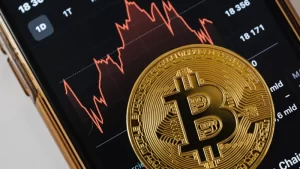Cryptocurrency exchanges play a vital role in the digital asset ecosystem. They are platforms where users buy and sell cryptocurrencies. As interest in cryptocurrencies has grown, so has the number and variety of exchanges. Two main types have emerged: centralized exchanges (CEX) and decentralized exchanges (DEX). For anyone involved in trading or investing in cryptocurrencies, it is crucial to understand the fundamental difference between these two models. Each type has its pros and cons. Understanding how the different types work can help you as a user make informed decisions based on your preferences, needs, and risk appetite.
How Centralized Exchanges Work
Centralized exchanges function much like traditional financial institutions. Users register on the platform, deposit funds, and conduct transactions within the exchange’s internal system. Exchanges act as intermediaries, facilitating transactions between buyers and sellers. It also manages users’ funds and stores their cryptocurrencies in wallets managed by the platform. This model is designed with convenience and speed in mind, offering features such as fiat/crypto trading, advanced charting tools, and customer support. Popular centralized exchanges include Binance, Coinbase, and Kraken. These exchanges serve millions of users around the world with a wide range of trading pairs and liquidity.
How Decentralized Exchanges Work
Decentralized exchanges operate on a completely different principle. Instead of relying on centralized institutions to manage transactions and hold funds, they rely on blockchain technology and smart contracts. This allows users to conduct peer-to-peer transactions directly. When using a decentralized exchange, individuals have full control over their private keys and funds throughout the entire trading process. Transactions take place on the blockchain, and the exchange does not take custody of the assets at any point. Popular decentralized exchanges include Uniswap, PancakeSwap, and SushiSwap. These platforms are especially popular among users who value privacy, security, and decentralization.
Security and Hosting
Security is one of the most important factors when comparing centralized and decentralized exchanges. Hackers easily target user funds on centralized exchanges due to their storage in separate wallets. There have been several serious data breaches in the past, with users suffering heavy losses. In contrast, decentralized exchanges (DEXs) do not hold user funds and therefore are less likely to experience large-scale hacks targeting a single point of failure. However, DEXs are not without risk; vulnerabilities in smart contracts and the investigation of uncontrolled projects can still lead to losses. Users should be careful in both environments, but the risk profile of the managed model is completely unique.
Liquidity and Volume
Centralized exchanges typically offer higher liquidity and larger trading volumes than decentralized exchanges. This is because they attract a wider user base, including institutional investors, and because they use order books to process trades efficiently. High liquidity means that traders get better prices, faster execution, and less slippage. While decentralized exchanges have grown rapidly, their liquidity is generally low, especially for less popular trading pairs. Automated market makers (AMMs) on DEXs help alleviate this problem, but periods of low volume or high volatility can still affect the user experience. This makes centralized exchanges (CEX) more suitable for high-frequency or high-volume trading.
User Experience and Interface
Centralized exchanges tend to offer a more complete and user-friendly experience. From a smooth signup process to an intuitive interface and responsive customer support, CEX are built for the average user. They often feature mobile apps, educational content, and comprehensive trading tools that are suitable for beginners and professionals alike. Decentralized exchanges, on the other hand, can require a longer learning curve. Users must connect to external wallets, understand gas fees, and navigate decentralized protocols that may not be as intuitive. While some DEXs improve usability, the overall experience is still more technical and less fluid than centralized platforms.
Regulation and Compliance
Centralized exchanges are regulated by the jurisdictions in which they operate. This includes adhering to anti-money laundering laws, implementing KYC procedures, and undergoing financial audits. This compliance increases trust between users and institutions, but also means that centralized platforms can freeze accounts, roll back transactions, or report user activity to authorities. Decentralized exchanges are designed to operate without central control and are therefore more difficult to regulate. This presents both a challenge and an opportunity: unregulated markets offer flexibility, but also raise concerns about consumer protection and market manipulation. The regulatory landscape for DEXs is still largely unclear and changing rapidly.
Asset Types and Listing Policies
Centralized exchanges typically have strict listing rules and perform due diligence before adding new currencies to their platforms. This provides a layer of security for users, but can limit access to newer or niche tokens. In contrast, decentralized exchanges typically allow any token to be traded as long as it adheres to a specific blockchain standard, such as ERC-20 on Ethereum. This openness gives users access to a wider range of assets, including those in earlier stages of development. However, this also increases the risk of scams or low-quality projects, requiring users to do their own research before investing.
Speed and transaction fees
Centralized exchanges are typically faster because transactions are executed off-chain within the exchange’s internal system. This reduces latency and eliminates blockchain confirmation times, allowing transactions to be executed instantly. Decentralized exchanges, on the other hand, depend on blockchain networks, which means that network congestion and block times influence transaction speeds. Gas fees on DEXs (particularly those built on Ethereum) can also be high during peak usage. These factors can determine whether you should trade more frequently or in small amounts. However, newer blockchains and layer-2 solutions are improving the speed and cost-effectiveness of DEXs, closing the gap with centralized exchanges.
Conclusion: Which is right for you?
The choice between centralized and decentralized exchanges ultimately comes down to your personal needs and values. Centralized exchanges offer speed, convenience, and support, making them ideal for both beginners and high-volume traders. They are also often more heavily regulated, which can provide greater trust and legal protection. On the other hand, decentralized exchanges offer greater privacy, control over assets, and resistance to censorship. They attract users who value autonomy and are willing to manage their own security. As the crypto market evolves, these two types of exchanges will continue to coexist, each serving a different segment of the market.



